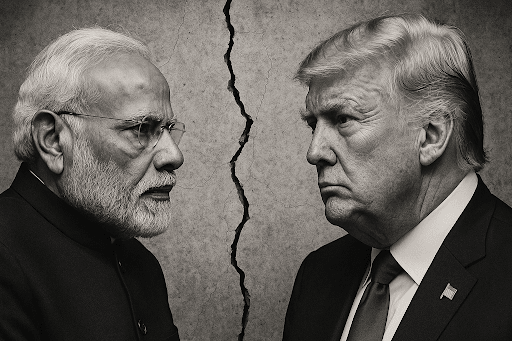India-US Relations: Strategic Patience vs. Economic Pressure
A critical examination of Prime Minister Modi's measured response to escalating US trade actions and the strategic calculus behind India's approach

A critical examination of Prime Minister Modi's measured response to escalating US trade actions and the strategic calculus behind India's approach
PART 1: The Economic Pressure Campaign
The India-US relationship stands at a defining crossroads. As President Trump's administration unleashes what can only be described as a comprehensive economic pressure campaign against India, a heated debate has emerged in New Delhi's political corridors: Is Prime Minister Narendra Modi's measured response a sign of strategic wisdom or diplomatic weakness?
This question, while politically convenient for opposition voices, misses the deeper strategic calculus at play. After observing global power dynamics for decades, it becomes clear that the loudest responses in geopolitics are often the weakest ones. True strategic strength sometimes manifests as calculated restraint, especially when playing a long-term game against a mercurial opponent.
The Escalating American Economic Offensive
The sequence of US actions against India reads like a systematic campaign designed to force New Delhi into submission. The trajectory began with a 25% reciprocal tariff on Indian goods, followed by an additional 25% penalty specifically targeting India's Russian oil purchases—effectively doubling the tariff burden to 50% on most Indian exports to America.
The economic warfare reached new dimensions with Trump's announcement of a $100,000 fee on H-1B visa applications. Given that Indian nationals comprise approximately 71% of H-1B visa holders, this measure represents a direct assault on India's human capital exports and strikes at the heart of the country's competitive advantage in global technology services.
The pharmaceutical sector faced a similar blow with 100% tariffs on branded pharmaceutical products manufactured outside the US. While primarily excluding generic medicines—which represent 30-34% of India's total pharmaceutical exports—industry experts suggest that companies like Sun Pharma, Dr. Reddy's, Biocon, and Aurobindo Pharma may have some exposure to the US branded pharmaceutical market., but hanging sword is there if tariffs is imposed on generics which may affect entire on Indian Pharma Industry.
And came the ultimatum from Washington makes the endgame clear: no trade agreements are possible unless India ceases Russian crude procurement entirely. This demand essentially seeks to subordinate India's energy security to American geopolitical objectives, treating the world's largest democracy as a client state rather than a strategic partner.
Adding to the mounting pressure, the United States imposed sanctions on Chabahar Port in Iran, a strategic asset that provides India with crucial access to West Asia and Central Asia, serving as an alternative to the Suez Canal-dependent routes.
The Flawed Perception of Weakness
Critics arguing for immediate retaliation fundamentally misunderstand both the nature of modern statecraft and India's strategic positioning. The narrative that Modi is exhibiting weakness ignores the fundamental asymmetry in the India-US relationship and the limited effectiveness of reactive measures.
Consider the numbers: US-India bilateral trade in goods reached approximately $124 billion in 2023, with total goods and services trade likely below $190 billion. For India, the US is the largest export destination, accounting for about 18-20% of its goods exports, while for the US, India remains a significant but not critical trading partner. This asymmetry means that a trade war would disproportionately impact India's export-dependent sectors. Moreover, India's goods exports to the United States constitute about 2% of Indian GDP, compared to 26-30% for Vietnam and around 10% for Thailand. This provides India with greater flexibility to absorb American pressure while pursuing alternative strategies. Unlike smaller economies that might buckle under American pressure, India's response reflects a calculated assessment of its own leverage and long-term interests. The comparison to Japan and South Korea, which have historically acquiesced to US demands, ignores the fundamental difference in India's strategic autonomy doctrine and its diversified partnership approach.
→ Coming up in Part 2: The economic asymmetry is undeniable, but India's response goes far beyond mere restraint. Behind the scenes, Modi's administration has been executing a sophisticated counter-strategy that transforms American pressure into an opportunity for structural transformation. In Part 2, we'll explore how India is turning economic jujitsu into a masterclass in strategic autonomy—and why this approach might be more powerful than any retaliatory tariff.
- Analysis of geopolitical and finance topics